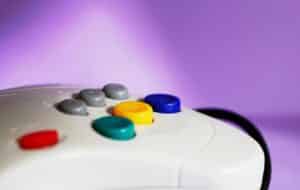Here’s the thing about work: it’s not exactly the place we go to have fun. For many, work has been associated with “adulting” tasks, endless meetings, and all the serious stuff nobody actually wants to deal with but has to.
But what if there’s a way to make working fun? What if our workplaces can become a place filled with positive experiences, exciting challenges, a competitive spirit, and incentives that go beyond the paycheck? Wouldn’t that make you look forward to Mondays and contribute to the overall production and development of the company?
Turns out, it is actually possible. And the secret lies in something that we are very familiar with: games. Sounds crazy, right? But workplace gamification is something that has been gaining popularity these days—and there’s some fascinating science behind how it works.

What is Workplace Gamification—and How Does it Boost Employee Engagement?
Aren’t we too old for games? Well, studies say otherwise. In today’s digital age, workplace gamification takes away the rigid structure at work and boosts motivation among employees. In fact, more and more companies have adapted this strategy to leverage the natural human drive for achievement and engagement. By gamifying tasks, employees dulled by mundane tasks have been reported to be more engaged and excited with the challenges, boosting productivity.
What do we mean by gamification? Simply put, this refers to the design of which game elements are incorporated in non-game contexts to affect motivation, engagement, and achievement. As games have been a crucial aspect of human culture and society, utilizing the mechanics of gaming in the workplace has been seen to promote desired motivation, behavior, and work productivity outcomes—making employees more engaged and motivated. Sales teams, in particular, have found success using sales leaderboard software to track performance, compare progress with colleagues, and stay connected, especially in remote or multi-location settings.
But gamification isn’t just about adding games for the sake of it. For it to be effective, it needs to be well thought out—with clear goals, appropriate structures, and principles that align with the company’s objectives and the individual motivations of the employees. So, how do we do this?
The Science Behind Gamified Workplaces—and Why It Enhances the Learning Process
Gamified workplaces are actually powered by one thing: motivation. This can be classified into two: intrinsic (which stems from something personal) and extrinsic (driven by rewards and compensation). And in the workplace, a mix of both is good.
In all practicality, who doesn’t want to receive a bonus or get acknowledged for a job well done, right? But we also know that motivation should also run deep. Extrinsic motivation can only take you so far. It’s the intrinsic motivation—of finding personal fulfillment, passion, and growth in your work—that truly drives long-term engagement and satisfaction. Gamification can tap into both.
How? Well, recent studies show that motivation can trigger the release of dopamine in our brains—yes, the feel-good hormone that brings that great feeling when we achieve something. So, how can companies fuel and sustain this motivation?
Theoretical Framework: Motivation and Gamification
Gamification in learning environments is deeply rooted in several theoretical frameworks that explain human motivation and behavior. One of the most influential is Self-Determination Theory (SDT), which posits that human behavior is driven by three innate psychological needs: autonomy, competence, and relatedness. When gamification elements such as leaderboards, badges, and rewards are thoughtfully integrated, they can satisfy these needs, thereby enhancing motivation and engagement in the learning process.
Another significant framework is the ARCS model, which identifies four key factors that influence motivation: attention, relevance, confidence, and satisfaction. Gamification can be designed to capture learners’ attention through engaging challenges, make the learning experience relevant and meaningful, build confidence by setting achievable goals, and provide a sense of satisfaction through rewards and recognition.
By understanding these theoretical frameworks, educators and instructional designers can craft gamified learning experiences that effectively motivate learners and enhance learning outcomes. This approach not only makes the learning process more enjoyable but also ensures that it caters to different learning styles, ultimately leading to better retention and application of knowledge.
How Leaderboards and Healthy Competition Empower Teams
The concept of fun changes as we age, especially in the corporate setting. How do we actually inject fun and gamify the workplace? One way is through the introduction of leaderboards—a ranking system that shows employees where they stand compared to their colleagues in terms of workplace performance. Like in fitness apps and online games, this can look like a visual presentation of an employee’s progress, highlighting top performers and individual contributions within the organization.
Leaderboards not only encourage employees to push themselves for personal growth (hello, intrinsic motivation), but they also tap into that extrinsic motivation by rewarding top performers with recognition or even tangible prizes.
But the task doesn’t end there. For leaderboards to fully realize their purpose—to boost productivity, drive results, and keep teams engaged—they must become a regular part of the work culture. And for it to become a habit, consistent implementation and reinforcement are key. But how?
1. Create fun and healthy competitions.
One way to make work fun is by reframing goals so they are clear and realistic. Sometimes, company goals can be too vague or too challenging, making them difficult for some team members to attain. To simplify this, itemize the goals that the team needs to work on, such as setting a goal for the month. By doing so and implementing fun and healthy competitions, goals can become more achievable and engaging.
Also, it is to note that competition can be a double-edged sword if not implemented well. It may cause unhealthy rivalry and tension among colleagues. To avoid this from happening, ensure that competitions are inclusive and encourage teamwork rather than rivalry. Celebrate everyone’s efforts and create an environment where success is shared and appreciated by all.
2. Include coaches and mentors.
While winning and achieving something might be the first things that come to mind with games, there’s an often-overlooked aspect of gamification: collaboration. This doesn’t just mean teamwork within the immediate team; it extends to involving those in higher positions.
Much like in games, coaches can help manage tasks, provide valuable insights, give confidence, help pinpoint areas for improvement, and facilitate thorough collaboration. They offer guidance throughout the implementation of projects, ensuring that every step aligns with the company’s broader goals and objectives. This collaborative approach enriches the workplace environment and nurtures mentorship and continuous learning.
3. Build the game thoughtfully.
Now, let’s address the elephant in the room: despite the many advantages that workplace gamification offers, some people still find it distracting, even demotivating, especially if the game mechanics aren’t well designed. The last thing you want is for gamification to feel like extra work or worse, to create a toxic, overly competitive environment.
That’s why it is important to build a gamified system that is appropriate for the conduct and culture of the company. It’s more than just implementing competitions and slapping a few badges, being on top of the leaderboards, and receiving monetary compensation (if there’s any).
Fortunately, with technology, gamification doesn’t have to be like stereotypical old-school games anymore. Games can be patterned on the desired metrics or goals that can track individual progress or set up multiplayer challenges where employees can compete and collaborate. And with the right tools, like Spinify, this can be easily integrated into the company’s system without disrupting day-to-day operations. And in case you’re working with sensitive company data, you don’t have to worry because employees can just utilize a free VPN for Mac or other devices to securely access the gamified platform, keeping everyone engaged and motivated even remotely.
Boosting Employee Engagement through Gamification
Gamification can be a powerful tool for boosting employee engagement and motivation in the workplace. By incorporating game-like elements such as leaderboards, challenges, and rewards, organizations can create a more engaging and interactive work environment that employees look forward to.
One of the key benefits of gamification is its ability to foster healthy competition among employees. Leaderboards can track progress and recognize top performers, encouraging employees to strive for excellence and continuously improve their skills. Additionally, gamification promotes continuous learning and development, providing employees with opportunities to acquire new skills and knowledge in a fun and engaging way.
To implement gamification effectively, organizations should focus on creating a supportive environment that encourages collaboration and teamwork. This can be achieved by designing gamification elements that promote social interaction, such as team-based challenges and peer-to-peer recognition. By doing so, companies can boost employee engagement and create a culture of continuous learning and development.
Implementing Leaderboards and Gamification Effectively
Implementing leaderboards and gamification effectively requires careful planning and design. Here are some strategies for effective implementation:
- Set clear goals and objectives: Define what you want to achieve through gamification and leaderboards, and ensure that they align with your organization’s overall goals and objectives.
- Choose the right metrics: Select metrics that are relevant and meaningful to your organization, providing a clear picture of employee performance and progress.
- Design engaging and interactive elements: Create gamification elements that are engaging, interactive, and fun, such as challenges, quizzes, and games.
- Provide feedback and recognition: Use leaderboards and gamification elements to provide feedback and recognition to employees, encouraging healthy competition and collaboration.
- Monitor and evaluate progress: Regularly monitor and evaluate the effectiveness of your gamification and leaderboard implementation, making adjustments as needed to ensure continuous improvement.
Strategies for Effective Implementation
Here are some additional strategies for effective implementation of leaderboards and gamification:
- Use a phased approach: Implement gamification and leaderboards in phases, starting with a small pilot group and gradually expanding to larger groups. This allows for testing and refinement before a full-scale rollout.
- Involve employees in the design process: Encourage employee participation in the design and development of gamification elements to ensure they are relevant and meaningful. This involvement can increase buy-in and enthusiasm for the initiative.
- Provide training and support: Offer training and support to employees on how to use gamification elements and leaderboards. Ensure they understand the goals and objectives of the implementation and how it benefits them.
- Use data analytics: Leverage data analytics to track employee performance and progress. Identify areas for improvement and adjust gamification strategies accordingly to maximize effectiveness.
- Celebrate successes: Recognize and celebrate employees who achieve milestones and goals. This reinforces the effectiveness of the gamification and leaderboard implementation and motivates others to strive for success.
The Future of Gamified Workplaces
The future of gamified workplaces is exciting and rapidly evolving, with new technologies driving innovation. With advancements in virtual and augmented reality, artificial intelligence, and machine learning, we’re on the brink of even more immersive and interactive gamification experiences.
One of the standout trends is the move toward personalized learning and development pathways. By harnessing AI and data analytics, these pathways offer employees tailored growth experiences that align with their unique goals, enhancing both engagement and impact. Companies that embrace these advancements will empower their teams to achieve new levels of motivation, performance, and overall success.
With Spinify, businesses are already leveraging the power of gamification to drive engagement and motivate teams through exciting challenges, real-time recognition, and personalized goals. Ready to see how it works? Book a demo with Spinify today and experience the future of workplace engagement!





